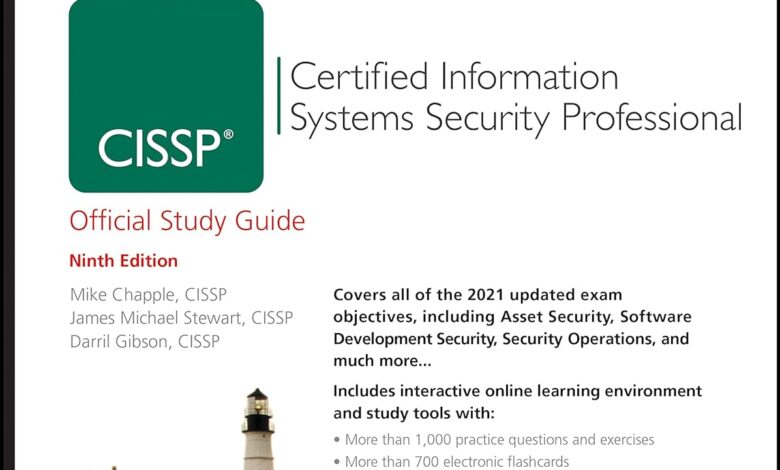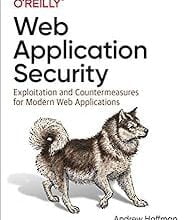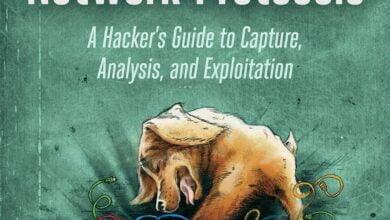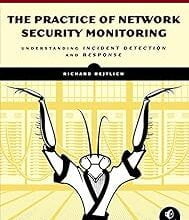Mastering CISSP Certification: An In-Depth Review of 'CISSP (ISC)2 Certified Information Systems Security Professional Official Study Guide
Your Expert Guide to Navigating the CISSP Exam and Achieving Certification Success

Welcome, BugBustersUnited community! Today, we’re exploring the CISSP (ISC)2 Certified Information Systems Security Professional Official Study Guide by Mike Chapple, James M. Stewart, and Darril Gibson. This guide is a vital resource for anyone aiming to master the CISSP certification, one of the most prestigious credentials in the cybersecurity field.
Whether you’re a millennial just starting in cybersecurity, an intermediate bug bounty hunter looking to enhance your skills, or an experienced professional aiming for higher-level security roles, this study guide has something valuable for you. The book thoroughly covers the eight domains of cybersecurity as defined by (ISC)², providing detailed explanations and effective test-taking strategies to ensure you’re well-prepared for the CISSP exam. Let’s dive into why this guide is essential for your cybersecurity journey.
About the Authors
Mike Chapple is a seasoned cybersecurity professional and an Associate Teaching Professor of IT, Analytics, and Operations at the University of Notre Dame. With extensive experience in network security, risk management, and data protection, Mike has authored numerous books and articles on cybersecurity. His practical approach to teaching and his deep understanding of cybersecurity principles make him a trusted voice in the industry.
James M. Stewart brings decades of experience in information security to the table. As a respected author and security consultant, James has contributed significantly to the development of security training programs and certification guides. His expertise spans various areas, including network security, ethical hacking, and compliance. James’s work has helped countless professionals prepare for and pass their certification exams, making him a valuable resource in the cybersecurity community.
Darril Gibson is a well-known cybersecurity expert, author, and educator. With over 20 years of experience in the IT and cybersecurity fields, Darril has authored numerous certification guides and training materials. His clear and engaging writing style and practical insights have helped many professionals achieve certifications such as CISSP, CompTIA Security+, and more. Darril’s contributions to cybersecurity education have made a lasting impact on the industry.
Mike Chapple, James M. Stewart, and Darril Gibson combine their extensive expertise to create the CISSP (ISC)2 Certified Information Systems Security Professional Official Study Guide. Their collective knowledge and experience provide readers with a comprehensive and practical resource for mastering the CISSP certification and advancing their careers in cybersecurity.
Overview of the Book
The CISSP (ISC)2 Certified Information Systems Security Professional Official Study Guide by Mike Chapple, James M. Stewart, and Darril Gibson focuses on the eight critical domains of cybersecurity as defined by (ISC)². These domains encompass the comprehensive knowledge areas required to excel in the CISSP certification exam and cover the full spectrum of information security topics.
Eight Cybersecurity Domains:
- Security and Risk Management: This domain covers the foundational concepts of information security, including risk management, security governance, and legal and regulatory compliance. It emphasizes the importance of creating and implementing effective security policies and strategies.
- Asset Security: This section focuses on protecting organizational assets, including data classification, data handling, and privacy protection measures. It delves into how to secure information assets throughout their lifecycle.
- Security Architecture and Engineering: This domain addresses the design and implementation of secure architectures, including secure engineering principles, security models, and controls used to protect information systems.
- Communication and Network Security: This domain explores network security protocols, secure network architecture, and the tools and techniques used to protect data during transmission. It covers critical aspects of secure communication channels and network security management.
- Identity and Access Management (IAM): This domain examines the frameworks and mechanisms for managing and controlling user identities and access privileges. It covers authentication methods, authorization processes, and identity management solutions.
- Security Assessment and Testing: This section highlights the importance of conducting security assessments, vulnerability assessments, and penetration testing. It provides practical insights into testing methodologies and tools used to evaluate the security posture of systems and networks.
- Security Operations: This domain focuses on the operational aspects of security management, including incident response, disaster recovery, and business continuity planning. It emphasizes the importance of maintaining and monitoring security operations to ensure ongoing protection.
- Software Development Security: This domain addresses the security considerations in the software development lifecycle. It covers secure coding practices, software testing, and the implementation of security controls in development environments.
Structured for Comprehensive Coverage: The guide is meticulously structured to provide thorough coverage of each domain, ensuring that readers gain a deep understanding of all the critical areas required for the CISSP exam. Each chapter is dedicated to a specific domain, offering detailed explanations of key concepts and practical insights that help bridge the gap between theory and practice.
Detailed Explanations and Practical Insights: The authors provide clear and concise explanations of complex topics, making them accessible to readers with varying levels of experience. Practical scenarios, case studies, and real-world examples are used throughout the book to illustrate how the concepts are applied in actual security situations. This practical approach not only aids in comprehension but also prepares readers to tackle real-world security challenges effectively.
By focusing on the eight domains defined by (ISC)² and providing comprehensive coverage, detailed explanations, and practical insights, the CISSP (ISC)2 Certified Information Systems Security Professional Official Study Guide equips readers with the knowledge and skills needed to excel in the CISSP exam and advance their careers in cybersecurity.
Key Highlights
The CISSP (ISC)2 Certified Information Systems Security Professional Official Study Guide by Mike Chapple, James M. Stewart, and Darril Gibson is packed with valuable content that makes it an indispensable resource for CISSP exam preparation. Here are some key highlights that stand out:
Security and Risk Management: This chapter thoroughly explores fundamental security concepts and principles. It delves into risk management processes, security governance, and compliance with legal and regulatory requirements. The authors offer detailed explanations of how to develop and implement effective security policies and strategies, making this section crucial for understanding the foundation of information security.
Asset Security: The asset security chapter focuses on protecting organizational assets, covering data classification, data handling, and privacy protection measures. It provides practical insights into how to secure information assets throughout their lifecycle. Including real-world examples helps illustrate how these principles are applied in practice, enhancing the reader’s comprehension and retention of the material.
Security Architecture and Engineering: This section addresses the design and implementation of secure architectures. It covers secure engineering principles, security models, and controls for protecting information systems. The authors present complex concepts in an accessible manner, supported by diagrams and examples that help clarify the material. This chapter is particularly valuable for building and maintaining secure systems.
Effective Test-Taking Strategies: The guide includes a variety of test-taking strategies designed to help readers maximize their exam performance. These strategies encompass time management techniques, tips for understanding and interpreting exam questions, and methods for eliminating incorrect answers. By incorporating these strategies, readers can approach the CISSP exam more confidently and efficiently.
Practical Scenarios and Real-World Examples: Throughout the book, the authors integrate practical scenarios and real-world examples that reinforce learning and illustrate the application of key concepts. These scenarios help bridge the gap between theoretical knowledge and practical application, preparing readers for both the exam and real-world security challenges. Case studies provide context and depth, making it easier to grasp complex topics.
Comprehensive Review Questions: At the end of each chapter, the book includes review questions that test the reader’s understanding of the material covered. These questions are designed to mirror the format and difficulty of the actual CISSP exam, providing valuable practice and helping to identify areas where further study is needed. The review questions are an effective tool for reinforcing learning and ensuring thorough exam preparation.
The CISSP (ISC)2 Certified Information Systems Security Professional Official Study Guide offers comprehensive coverage of essential topics, practical insights, and effective test-taking strategies by delving into these key chapters and sections. This holistic approach ensures that readers are well-prepared to succeed in the CISSP exam and apply their knowledge in real-world security environments.
Why It’s Recommended for Cybersecurity Professionals
The CISSP (ISC)2 Certified Information Systems Security Professional Official Study Guide by Mike Chapple, James M. Stewart, and Darril Gibson is highly recommended for both novices and experienced professionals in the cybersecurity field. Here’s why this book is essential for anyone looking to excel in cybersecurity and achieve the CISSP certification:
Utility for Novices: This book offers a robust foundation in the eight critical domains defined by (ISC)² for those new to cybersecurity. The authors present complex concepts in a clear and understandable manner, making it accessible for beginners. The structured approach ensures that novices can build their knowledge step-by-step, starting with fundamental principles and progressing to more advanced topics. The comprehensive coverage of each domain provides a solid base upon which to build a successful career in cybersecurity.
Value for Experienced Professionals: Experienced cybersecurity professionals will find immense value in the in-depth coverage and advanced insights provided in the book. The detailed exploration of security architecture, risk management, and incident response frameworks offers seasoned professionals fresh perspectives and updated methodologies. The practical scenarios and real-world examples included in the guide allow experienced practitioners to see how the concepts are applied in actual security situations, enhancing their ability to address complex security challenges.
Foundational Understanding and Exam Strategies: The book thoroughly explains the eight cybersecurity domains that are essential for passing the CISSP exam. Each chapter is dedicated to a specific domain, ensuring that readers gain a deep and comprehensive understanding of all the critical areas required for the certification. Additionally, the guide offers effective test-taking strategies, including time management techniques and tips for understanding and interpreting exam questions. This combination of foundational knowledge and practical exam strategies significantly increases the likelihood of success on the CISSP exam.
Hands-on Knowledge and Practical Tools: One of the standout features of this study guide is its emphasis on hands-on knowledge and practical tools. The inclusion of practical scenarios, case studies, and real-world examples helps bridge the gap between theoretical knowledge and practical application. These useful insights prepare readers to tackle real-world security challenges effectively. The review questions at the end of each chapter provide valuable practice and reinforce learning, ensuring readers are well-prepared for the exam and their professional roles.
Real-World Application: The practical tools and hands-on knowledge provided in the book equip readers to handle real-world security scenarios with confidence. Whether it’s developing and implementing security policies, managing risk, or responding to security incidents, the guide offers the insights and skills needed to excel in high-level security roles. This real-world applicability makes the book an invaluable resource for anyone looking to advance their career in cybersecurity.
The CISSP (ISC)2 Certified Information Systems Security Professional Official Study Guide is a must-have resource for cybersecurity professionals at all levels. It offers foundational knowledge for beginners, advanced insights for experienced practitioners, and practical tools for dealing with real-world security scenarios. By providing comprehensive coverage of the eight domains and effective exam strategies, this guide ensures that readers are well-equipped to achieve CISSP certification and excel in their cybersecurity careers.
Engagement and Learning Path
As you delve into the CISSP (ISC)2 Certified Information Systems Security Professional Official Study Guide by Mike Chapple, James M. Stewart, and Darril Gibson, it’s important to see this book as a crucial part of your continuous education in cybersecurity. Here are some ways to maximize your engagement and learning:
Participate in Relevant Workshops: Look for workshops, webinars, and training sessions focused on CISSP certification and advanced security topics. These events often feature hands-on labs and real-world scenarios that complement the material covered in the book. Participating in these workshops allows you to practice the techniques in a guided setting and learn from industry experts and peers.
Practice in Controlled Environments: Set up your own lab environment or use online platforms like Hack The Box, TryHackMe, or other cybersecurity labs to practice the techniques outlined in the book. Controlled environments provide a safe space to experiment with different tools and strategies without risking real-world systems. This hands-on practice is crucial for internalizing the knowledge and developing the skills needed to handle actual security challenges.
Continuing the Learning Journey: Cybersecurity is a dynamic field with constant advancements and emerging threats. To stay current, it’s essential to continuously seek out new information and training opportunities. Read industry news, subscribe to cybersecurity blogs, and follow research papers to keep up-to-date. The CISSP (ISC)2 Certified Information Systems Security Professional Official Study Guide should be one of many resources in your learning journey.
Networking and Mentorship: Connect with other cybersecurity professionals through conferences, meetups, and professional organizations. Networking can lead to mentorship opportunities, collaborations, and knowledge sharing. Building relationships with experienced practitioners can provide guidance and support as you advance in your career.
By viewing the CISSP (ISC)2 Certified Information Systems Security Professional Official Study Guide as an integral part of your continuous education, you position yourself for growth and success in the field of cybersecurity. Engage actively with the community, participate in learning events, and practice regularly to hone your skills and stay ahead in the ever-evolving landscape of cybersecurity.
Conclusion and Call to Action
In conclusion, the CISSP (ISC)2 Certified Information Systems Security Professional Official Study Guide by Mike Chapple, James M. Stewart, and Darril Gibson is essential for anyone serious about achieving CISSP certification and mastering advanced security skills. This comprehensive guide provides the foundational knowledge, practical insights, and effective strategies needed to excel in the CISSP exam and advance in cybersecurity.
We invite the BugBustersUnited community to share their experiences with the book. How has it influenced your cybersecurity approach? What insights and techniques have you found most valuable? Your positive and constructive feedback is crucial in helping others understand the impact of this guide.
By sharing your usage, the good, the bad, or any other relevant experiences related to bug bounty hunting, you contribute to a richer understanding and help improve our community. Your stories and insights can inspire others, provide new perspectives, and foster a collaborative environment of continuous learning and improvement.
Join the conversation and let us know how the CISSP (ISC)2 Certified Information Systems Security Professional Official Study Guide has shaped your journey. Together, we can build a supportive and knowledgeable community that excels in cybersecurity and bug bounty hunting. Let’s work together to push the boundaries of our understanding and improve our collective capabilities.




